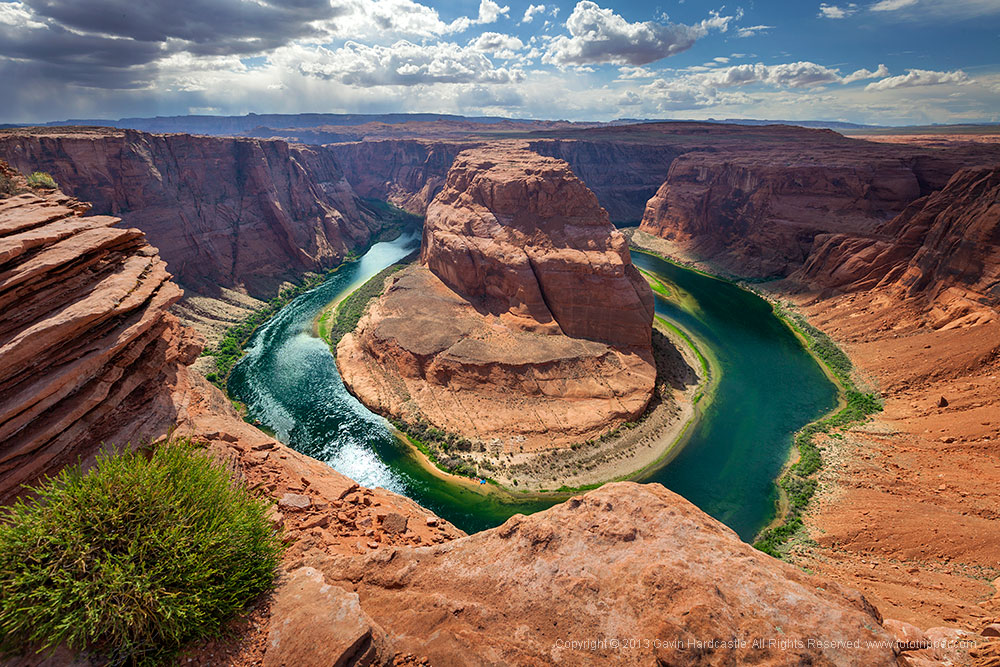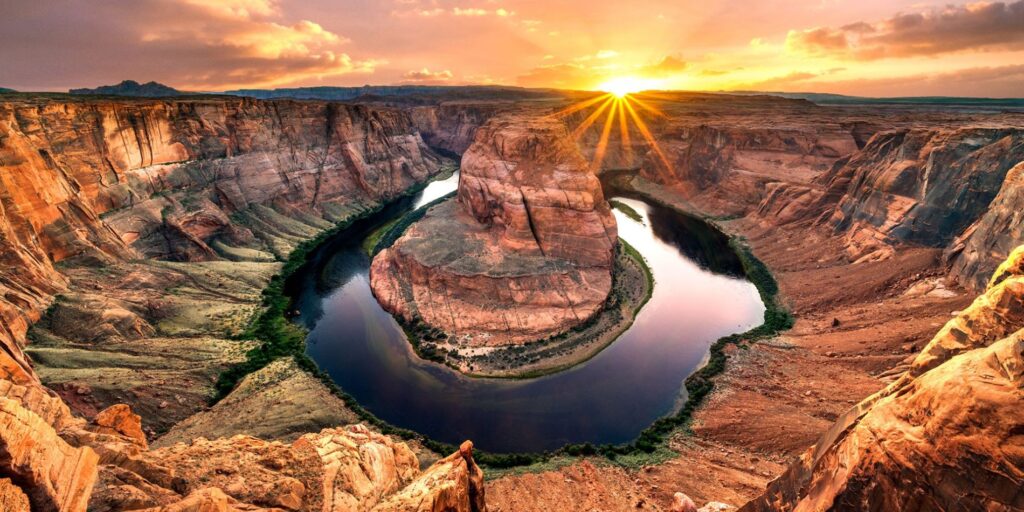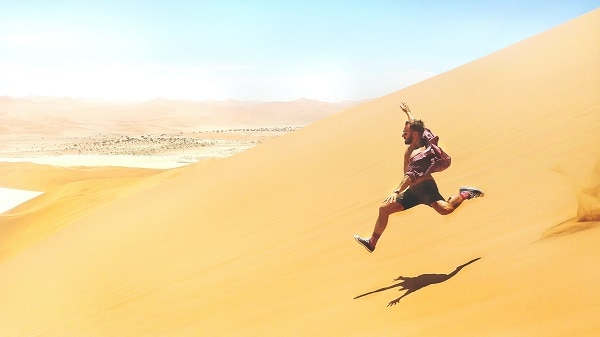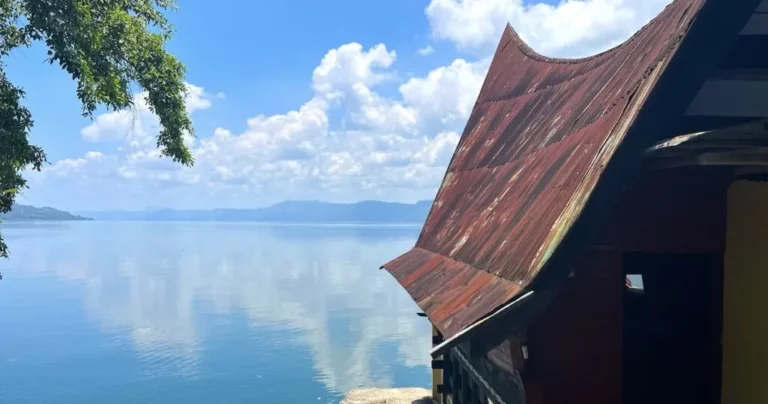Ultimate Guide to Horseshoe Bend, Arizona A Scenic Adventure You Can’t Miss
If you’ve ever stumbled across a photo of a river making a perfect horseshoe shape, chances are it was Horseshoe Bend in Arizona. And honestly? Photos don’t do it justice. Standing at the edge of this natural wonder, with the Colorado River winding beneath you, gives a mix of awe, thrill, and a slight whoa, don’t fall! moment. This guide is here to help you soak it all in, from how to get there and when to visit, to fun facts, tips, and real-life experiences that make Horseshoe Bend more than just a pretty view.
Where Exactly is Horseshoe Bend?
Horseshoe Bend is just outside the small desert town of Page, Arizona, and forms part of the Glen Canyon National Recreation Area. It’s about 5 miles downstream from Lake Powell, which means you can easily combine a visit to the lake and the bend in one day.
The area’s geological beauty is unreal: Navajo sandstone cliffs, dramatic desert landscapes, and a river that somehow managed to carve this iconic bend over millions of years. If you’re driving through Northern Arizona, Horseshoe Bend is an easy detour that’s worth the stop.
The Perfect Time to Visit
Timing is everything at Horseshoe Bend. Early mornings and late afternoons are your best bets. Sunrise gives you soft, warm light and usually fewer crowds. Sunset? Pure golden magic.
Summer can get scorching hot, think 100°F plus, sunbathing on red rocks, so hydration is key. Winter offers quieter conditions, though the temperatures dip, and mornings can be frosty. Pro tip: if you’re aiming for that perfect Instagram shot, avoid mid-day light; harsh shadows aren’t flattering for even the most epic river bends.
How to Get There: Road Tips and Parking
Getting to Horseshoe Bend is pretty straightforward. From Page, drive south on US-89 for about 5 miles until you reach the parking lot. From there, it’s a 0.75-mile hike to the viewpoint.
The trail is sandy and exposed, so wear comfortable shoes and pack water. Parking fees hover around $10 per vehicle, which isn’t bad for access to such an iconic spot. If you’re planning a road trip, combine your visit with nearby Antelope Canyon or Lake Powell for maximum adventure.
| Item | Estimated Cost |
|---|---|
| Parking | $10 per vehicle |
| Guided Tour | $30–$70 per person |
| Hiking Gear | $0–$50 (optional) |
The Hike to the Viewpoint
Don’t be fooled by the short dista, the desert sun can make even a 0.75-mile trek feel epic. The trail is mostly flat with minimal shade. Kids, older adults, and casual hikers can manage, but bring plenty of water, take breaks, and pace yourself. Bonus: the hike itself gives you multiple mini viewpoints along the way. Stop, snap a photo, and soak in the scenery. Sometimes the prelude is just as rewarding as the main show.
Photography Tips for the Best Shots

Horseshoe Bend is a photographer’s playground for a wide-angle shot; a lens that can capture the entire bend is perfect. Sunrise and sunset offer dynamic lighting, while midday is good for bright, crisp images with vibrant colors. Tripods help with long exposures if you’re experimenting with river motion. And here’s a little secret: the bend looks different from every angle, so wander a bit along the cliff edge (safely!) to discover your unique shot.
Fun Facts About Horseshoe Bend
-
Formed over millions of years by the Colorado River cutting through the Navajo sandstone.
-
Cliffs rise about 1,000 feet above the river.
-
Part of a larger canyon system, making it geologically significant. Insert image
Beyond its Instagram-worthy look, Horseshoe Bend is also an educational gem. Geology enthusiasts study the formations, while historians appreciate the indigenous cultures that have called this region home for centuries.
Wildlife and Nature You Might See

The desert might seem empty, but there’s life here. Hawks and eagles often soar overhead, lizards sunbathe on the rocks, and if you’re lucky, deer or other desert mammals might cross your path in the early morning. The river itself supports fish and amphibians. Observing wildlife adds a whole new layer to the visit. Suddenly, you’re not just looking at rock; you’re stepping into a living ecosystem.
Nearby Attractions Worth Exploring

-
Antelope Canyon: Famous for light beams piercing narrow slot canyons.
-
Lake Powell: Perfect for boating, kayaking, and paddleboarding.
-
Grand Canyon: Just a drive away for those wanting to see the world-famous canyon rim.
Plan a multi-day itinerary to enjoy the best of Northern Arizona. Horseshoe Bend works perfectly as part of a larger Southwest road trip.
Tips for a Comfortable Visit

-
Wear lightweight, breathable clothing.
-
Sunscreen, hat, and sunglasses are non-negotiable.
-
Carry snacks and plenty of water.
-
Comfortable walking shoes or boots are essential.
By preparing smartly, you can focus on the scenery instead of suffering under the sun.
Sustainable Travel Practices
Stick to marked trails, avoid disturbing wildlife, and pack out any trash. Sustainable travel practices preserve the experience for future generations while showing respect for the land and its history.
Real-Life Use Cases: Beyond a Pretty View
-
Photography Expeditions: Professional photographers and hobbyists alike come here for breathtaking shots.
-
Educational Tours: Schools and universities use the site to teach geology, ecology, and environmental science.
-
Adventure Tourism: Hikers and outdoor enthusiasts enjoy the short but rewarding trail.
-
Meditative Retreats: The view is ideal for mindfulness and meditation practices.
-
Cultural Appreciation: Learn about the indigenous history and geology of the area.
Horseshoe Bend isn’t just a scenic location; it’s a hub for creativity, learning, and personal reflection.
Safety Considerations
-
Cliffs are steep and unguarded in some areas.
-
Keep kids and pets close.
-
Hydrate and avoid visiting during peak sun hours in summer.
-
Respect local guidelines to ensure your visit is safe and enjoyable.
Planning Your Visit: Practical Tips
-
Go early for fewer crowds.
-
Wear sun protection and carry water.
-
Bring a camera or phone fully charged.
-
Explore nearby attractions for a full-day adventure.
-
Be mindful of weather conditions and dress appropriately.
Conclusion
Horseshoe Bend, Arizona, is more than a postcard-worthy landscape. It’s a place where nature’s power and artistry meet, creating an unforgettable experience. Whether you’re seeking adventure, capturing the perfect photograph, learning about geology, or simply finding a spot to meditate, Horseshoe Bend delivers. By planning your visit wisely, following safety and sustainability tips, and soaking in the surrounding natural beauty, you’ll leave with memories that last a lifetime. This iconic bend isn’t just a landmark; it’s a gateway to adventure, education, and personal reflection. Insert image
FAQ
-
When is the best time to visit Horseshoe Bend?
Early morning or late afternoon is ideal for avoiding crowds and capturing the best light. -
Is the hike suitable for children and elderly visitors?
Yes, it’s short and manageable, but caution is needed near cliff edges. -
Do I need a guide to visit?
No, but guided tours can provide valuable educational insights. -
Are there any fees to visit?
Parking costs around $10 per vehicle. Guided tours vary from $30–$70. -
Can I combine my visit with other attractions?
Absolutely. Antelope Canyon, Lake Powell, and the Grand Canyon are all nearby.






